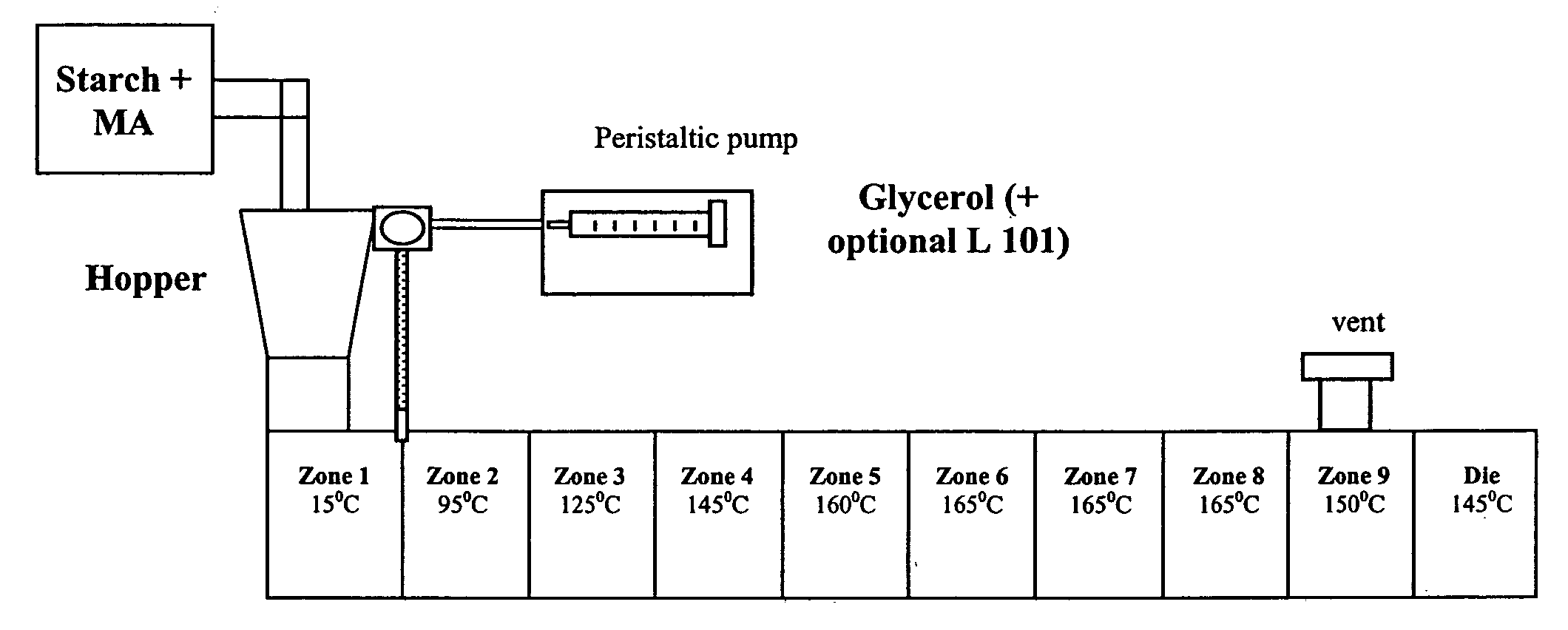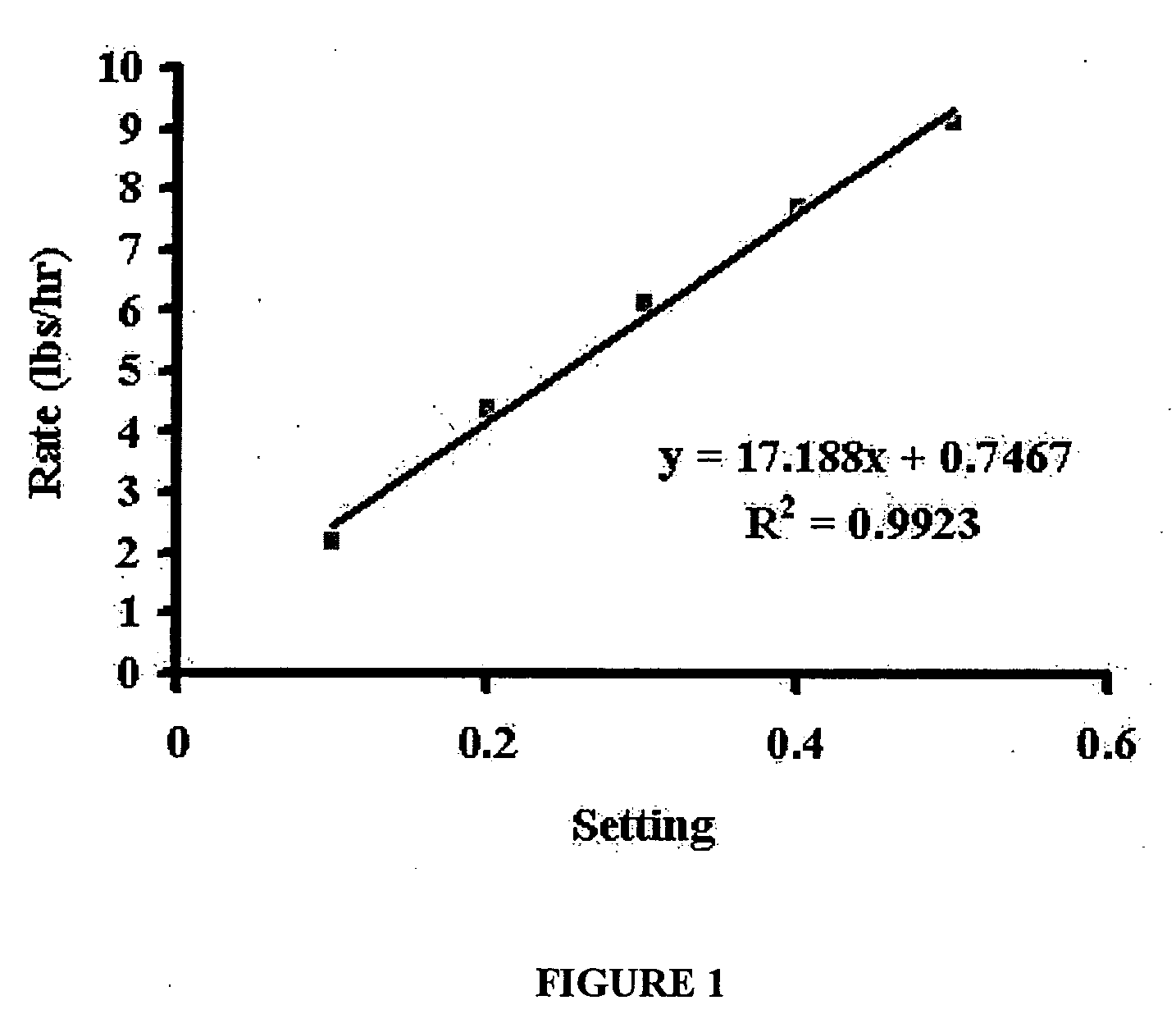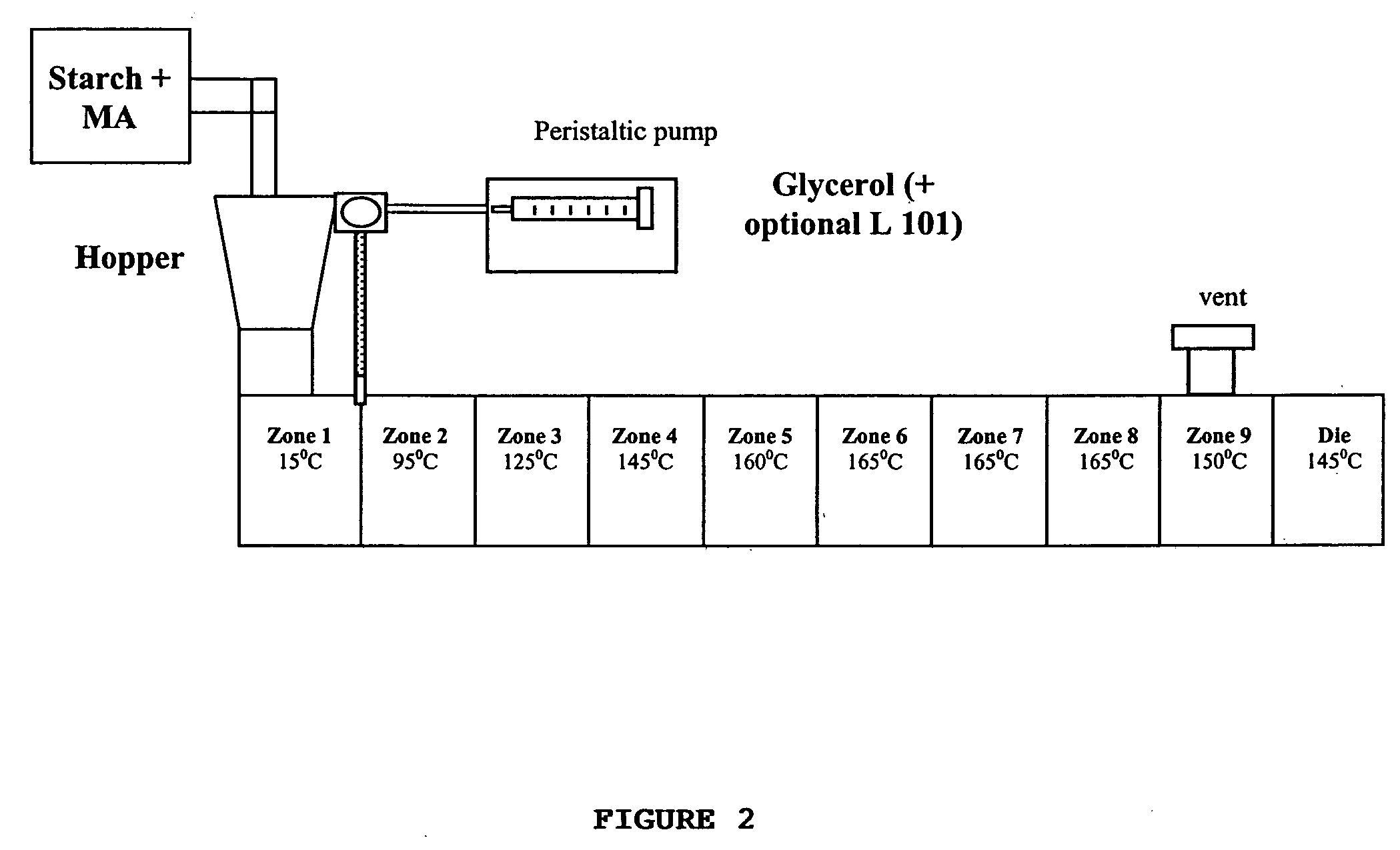Chemically modified plasticized starch compositions by extrusion processing
a technology of chemically modified plasticized starch and composition, which is applied in the direction of starch dervative coating, adhesive type, coating, etc., can solve the problems of unmodified starch polymer embrittlement, poor processing characteristics and mechanical properties, and differences in the rheological and final characteristics of each composition, so as to prevent problems such as high viscosity, reduce the effect of rheological and final characteristics and low viscosity
- Summary
- Abstract
- Description
- Claims
- Application Information
AI Technical Summary
Benefits of technology
Problems solved by technology
Method used
Image
Examples
example 1
[0058] Chemical modification of starch polymer was carried out as follows:
[0059] Regular silver pearl corn-starch, obtained from Cargill Inc. was reactively modified using maleic anhydride / maleic acid in a twin-screw co-rotating CENTURY extruder with a screw diameter of 30 mm and a L / D ratio of 40. Maleic anhydride (MA) was ground to a fine powder using a mortar and pestle and mixed with the starch (800 gm starch+[20 gm] maleic anhydride) using a kitchen blender for 15 minutes before being fed to the feed port of the extruder. Glycerol was mixed with 2,5-Bis (tert-butylperoxy)-2,5-dimethylhexane (Luperox 101) {200 gm glycerol+1.6 gm Luperox 101} and pumped to the extruder using a peristaltic pump. The relative rates of the starch / MA mixture to the glycerol / Luperox 101 mixtures were maintained at 80:20. The calibration curve for the glycerol pump is shown in FIG. 1. The screw configuration used for the maleation consisted of conveying and kneading elements as shown in FIGS. 3A to 3C...
example 2
[0061] The procedure given in Example 1 was followed using maleic acid modifier instead of maleic anhydride. CMPS produced was extracted using tetrahydrofuran (THF) in a Soxhlet apparatus to remove the unreacted maleic acid. FTIR analysis (FIG. 5) conducted on the Soxhlet residue (after drying in an oven at 50° C. overnight) confirmed grafting of the maleic acid onto the starch backbone with the presence of the ester carbonyl peak at 1720 cm−1.
example 3
[0062] The procedure in Example 1 was followed to produce CMPS modified using 2.4-wt %, maleic anhydride, both with and without the initiator. Chemically modified plasticized starch (CMPS) was produced by plasticization of regular corn starch (Corn Products, Inc-Brazil) using 20-wt % glycerol plasticizer in a twin-screw extruder. The intrinsic viscosity of starch, PS, CMPS (2.4-wt % maleic anhydride and 0.1-wt % Luperox 101) and CMPS (no Luperox 101) were determined in DMSO solvent using Cannon Ubeholde viscometer (0B). The intrinsic viscosity of starch was around 1.6 dl / g while that of PS reduced to 1.2 dl / g. However, on maleation without addition of Luperox 101, the intrinsic viscosity of CMPS drastically dropped to 0.29 dl / g. This reduction is attributed to a decrease in molecular weight due to the hydrolysis of starch in the presence of maleic acid. However, on addition of Luperox 101, the intrinsic viscosity increased slightly to 0.31 dl / g. This increase is attributed to branch...
PUM
| Property | Measurement | Unit |
|---|---|---|
| Temperature | aaaaa | aaaaa |
| Temperature | aaaaa | aaaaa |
| Temperature | aaaaa | aaaaa |
Abstract
Description
Claims
Application Information
 Login to View More
Login to View More - R&D
- Intellectual Property
- Life Sciences
- Materials
- Tech Scout
- Unparalleled Data Quality
- Higher Quality Content
- 60% Fewer Hallucinations
Browse by: Latest US Patents, China's latest patents, Technical Efficacy Thesaurus, Application Domain, Technology Topic, Popular Technical Reports.
© 2025 PatSnap. All rights reserved.Legal|Privacy policy|Modern Slavery Act Transparency Statement|Sitemap|About US| Contact US: help@patsnap.com



